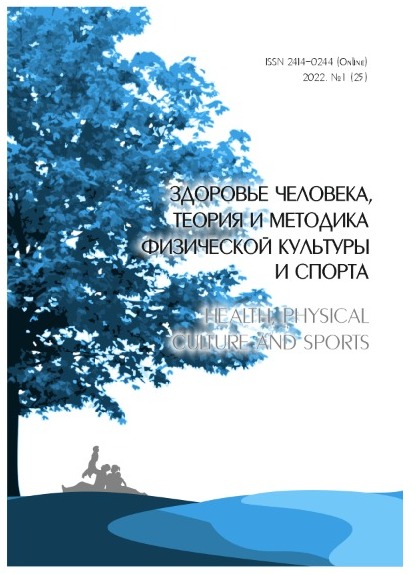Semiotic analysis of sports as a structur
Abstract
Based on the structural analysis three categories of the semiotic structure are identified, namely, form, content and meaning. In fact, in the semiotic structure of sport the rules of any competition are a form, i.e they are a language. The content of the sporting activities is a competition, which can be considered as a visual text. The significance of sport results in the completeness and semantic organization of the whole sports process.
Downloads
References
Бенвенист Э. Общая лингвистика. М. : Прогресс, 1974.
Эко У. Отсутствующая структура. Введение в семиологию. СПб. : Simposium, 2004.
Греймас А.-Ж. Структурная семантика: Поиск метода. М. : Академический проект, 2004.
Хейзинга Й. Homo Ludens. В тени завтрашнего дня. М. : Прогресс, 1992.
Леви-Строс К. Структурная антропология. М. : ЭКСМО-пресс, 2001.
Мечковская Н.Б. Семиотика: Язык. Природа. Культура : курс лекций. М., 2004.
Моррис Ч.У. Основания теории знаков // Семиотика: Антология. М. ; Екатеринбург, 2001. С. 45–97.
Пирс Ч.С. Из работы «Элементы логики. Grammatica Speculativa» // Семиотика: Антология. М. ; Екатеринбург, 2001. С. 165–226.
Соссюр Ф. де. Труды по языкознанию. М. : Прогресс, 1977.
Сепир Э. Избранные труды по языкознанию и культурологии. М., 1993.
Copyright (c) 2022 Health, physical culture and sports

This work is licensed under a Creative Commons Attribution-NonCommercial 4.0 International License.
An author should not normally publish manuscripts describing essentially the same research in multiple journals or publication venues. Such redundant publication is generally considered to constitute unethical publishing behavior, and if discovered may result in a manuscript under consideration being rejected, or a published article being retracted.
Authors of manuscripts reporting on original research should present an accurate account of the work performed, accompanied by an objective discussion of its significance. Underlying data should be represented accurately in the manuscript. The manuscript should contain sufficient detail and references to permit others to replicate the work. The fabrication of results and the making of fraudulent or knowingly inaccurate statements constitute unethical behavior and may be cause for rejection or retraction of a manuscript or published article.





